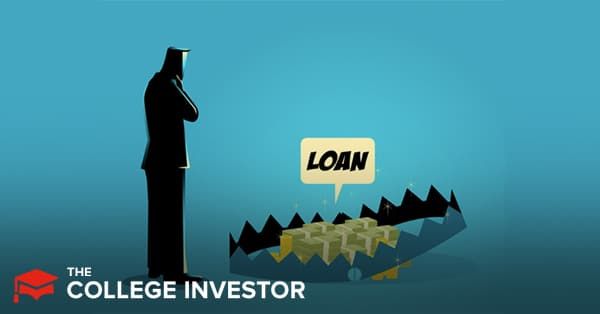
The Federal Family Education Loan Program (FFELP Loans) ended on June 30, 2010, more than ten years ago. Since July 1, 2010, all new federal education loans have been made through the Direct Loan Program.
However, many borrowers still have FFELP loans. According to the U.S. Department of Education, nearly 10.6 million borrowers still owe $238.8 billion in FFELP loans. That's an average of $22,528 per borrower.
Almost half of these loans are held by commercial lenders, not the U.S. Department of Education or guarantee agencies. These borrowers have three main options available for dealing with their FFLEP loans:
- Do nothing
- Consolidate the FFELP loans into a Federal Direct Consolidation Loan
- Refinance the FFELP loans into a private student loan
In this article, we'll examine the pros and cons of the latter two options.
Note: There has been an updated IDR Waiver that could impact old FFEL Loans. Learn about the IDR Waiver here. Furthermore, some of these programs may different temporarily due to these waivers.
Editor's Note: Some dates have been updated to reflect the payment pause expiration.
Pros And Cons Of Consolidating FFELP Loans
Here are the main advantages and disadvantages of consolidating your FFELP loans.
Pros Of Consolidation
Federal loans in the Direct Loan program are eligible for the payment pause and interest waiver. This temporary benefit will continue through August 30, 2023.
Consolidating FFELP loans into a Federal Direct Consolidation Loan will make the loans eligible for the payment pause and interest waiver as long as it's done prior to August 30, 2023.
Consolidating FFELP loans could also make them eligible for future student debt cancellation. Even though President Biden's loan forgiveness plan was struck down by the Supreme Court, any future loan forgiveness plans will only impact Direct Loans, not FFELP Loans.
Consolidating FFELP loans into a federal Direct Consolidation Loan makes those loans eligible for Public Service Loan Forgiveness (PSLF). The new consolidation loan will be eligible for tax-free loan forgiveness after the borrower makes 120 qualifying payments on the consolidation loan while working full-time for a public service employer.
Furthermore, with the PSLF Simplification Announcement President Biden made, FFEL Loan payments can count for PSLF as long as they are consolidated before October 31, 2022. This is important if you want old FFEL Loan Payments to count!
Consolidation loans are eligible for a more flexible version of extended repayment. Without consolidation, borrowers are eligible for a 25-year repayment plan if they owe $30,000 or more in federal loans. With consolidation, the maximum repayment term depends on the amount owed, according to this table:
Loan Balance | Repayment Term |
|---|---|
Less than $7,500 | 10 years (120 payments) |
$7,500 to $9,999 | 12 years (144 payments) |
$10,000 to $19,999 | 15 years (180 payments) |
$20,000 to $39,999 | 20 years (240 payments) |
$40,000 to $59,999 | 25 years (300 payments) |
$60,000 or more | 30 years (360 payments) |
Increasing the repayment term from 10 years to 30 years will cut the monthly payment roughly in half. But it will also triple the total interest paid. Increasing the repayment term to 20 years will cut the monthly payments by more than a third, but will double the total interest paid.
FFELP borrowers are already eligible for Income-Based Repayment (IBR), which forgives the remaining debt after 25 years in repayment and has a monthly loan payment of 15% of discretionary income. But after consolidation, their FFELP loans may become eligible for the Revised Pay As You Earn Repayment Plan (REPAYE), which reduces the monthly payment to 10% of discretionary income and has a valuable ongoing interest subsidy.
Finally, consolidation can be used to rehabilitate defaulted FFELP loans. This is a one-time option. And the borrower must agree to repay the loans under an income-driven repayment plan.
Cons Of Consolidation
Consolidating FFELP loans doesn't come without risk. First, it could the payment clock, since a consolidation loan is a new loan. So a borrower in Income-Based Repayment (IBR) will lose the progress they've made toward 25-year forgiveness of the remaining debt.
Note: If you consolidate before October 2022, your prior payments WILL count for both IBR forgiveness and PSLF forgiveness (through the one-time payment count adjustment). However, once the waiver expires, consolidation would reset the clock again. THIS IS IMPORTANT - CONSOLIDATE YOUR LOANS BEFORE OCTOBER 31, 2022.
Second, borrowers who are benefiting from lender-provided loan discounts, such as prompt payment discounts, will lose those discounts. The only discount provided on Direct Loans is a 0.25% interest rate reduction for making automatic monthly loan payments through autopay.
Pros And Cons Of Refinancing FFELP Loans
Now that we've covered the pros and cons of consolidating your FFELP loans, let's look at the benefits and drawbacks of refinancing them with a private lender.
Pros of Refinancing
Student loan refinancing may enable borrowers with excellent credit to qualify for a lower interest rate. This is especially true of older loans, which were made at much higher interest rates. The current federal student loan interest rates are at or near record lows.
Refinancing a private student loan without a cosigner is also one way of obtaining the equivalent of cosigner release. The new private student loan pays off the old loans, effectively releasing the cosigner from their obligation to repay the old loans.
The main challenge is qualifying for the private refinance without a cosigner. But, if the borrower has a steady job and has been making all of their payments on-time for a few years, their credit profile may have improved enough for them to qualify for a private refinance on their own.
Cons Of Refinancing
Refinancing federal student loans into a private student loan will cause the loans to lose access to the superior benefits of federal student loans. In addition to the payment pause and interest waiver, these benefits include:
- Economic hardship deferment
- Unemployment deferment
- General forbearances
- Death and disability discharges
- Income-driven repayment plans
- Loan forgiveness options
Nevertheless, a borrower might consider refinancing if they have older FFELP loans from when the interest rates were as high as 8.5% fixed. The savings might be sufficient to compensate for the loss of repayment flexibility.
Final Thoughts
Both student loan consolidation and refinancing are one-way operations. Once your FFELP loans have been consolidated or refinanced, you can't undo the transaction. So make sure you've carefully thought the pros and cons before choosing either option.
If you want to keep your existing federal benefits or qualify for more, consolidation is the way to go. But if interest savings is your main goal, refinancing might be right for you.
Finally, if you're looking to strike a balance between these two priorities, you might actually be better off keeping your FFELP loans separate and accelerating repayment of your highest-rate loan. That way you can reduce your interest cost in the short-term without giving up the ability to join the IBR plan or take out a Direct Consolidation Loan down the road.

Mark Kantrowitz is an expert on student financial aid, scholarships, 529 plans, and student loans. He has been quoted in more than 10,000 newspaper and magazine articles about college admissions and financial aid. Mark has written for the New York Times, Wall Street Journal, Washington Post, Reuters, USA Today, MarketWatch, Money Magazine, Forbes, Newsweek, and Time. You can find his work on Student Aid Policy here.
Mark is the author of five bestselling books about scholarships and financial aid and holds seven patents. Mark serves on the editorial board of the Journal of Student Financial Aid, the editorial advisory board of Bottom Line/Personal, and is a member of the board of trustees of the Center for Excellence in Education. He previously served as a member of the board of directors of the National Scholarship Providers Association. Mark has two Bachelor’s degrees in mathematics and philosophy from the Massachusetts Institute of Technology (MIT) and a Master’s degree in computer science from Carnegie Mellon University (CMU).
Editor: Robert Farrington Reviewed by: Chris Muller
